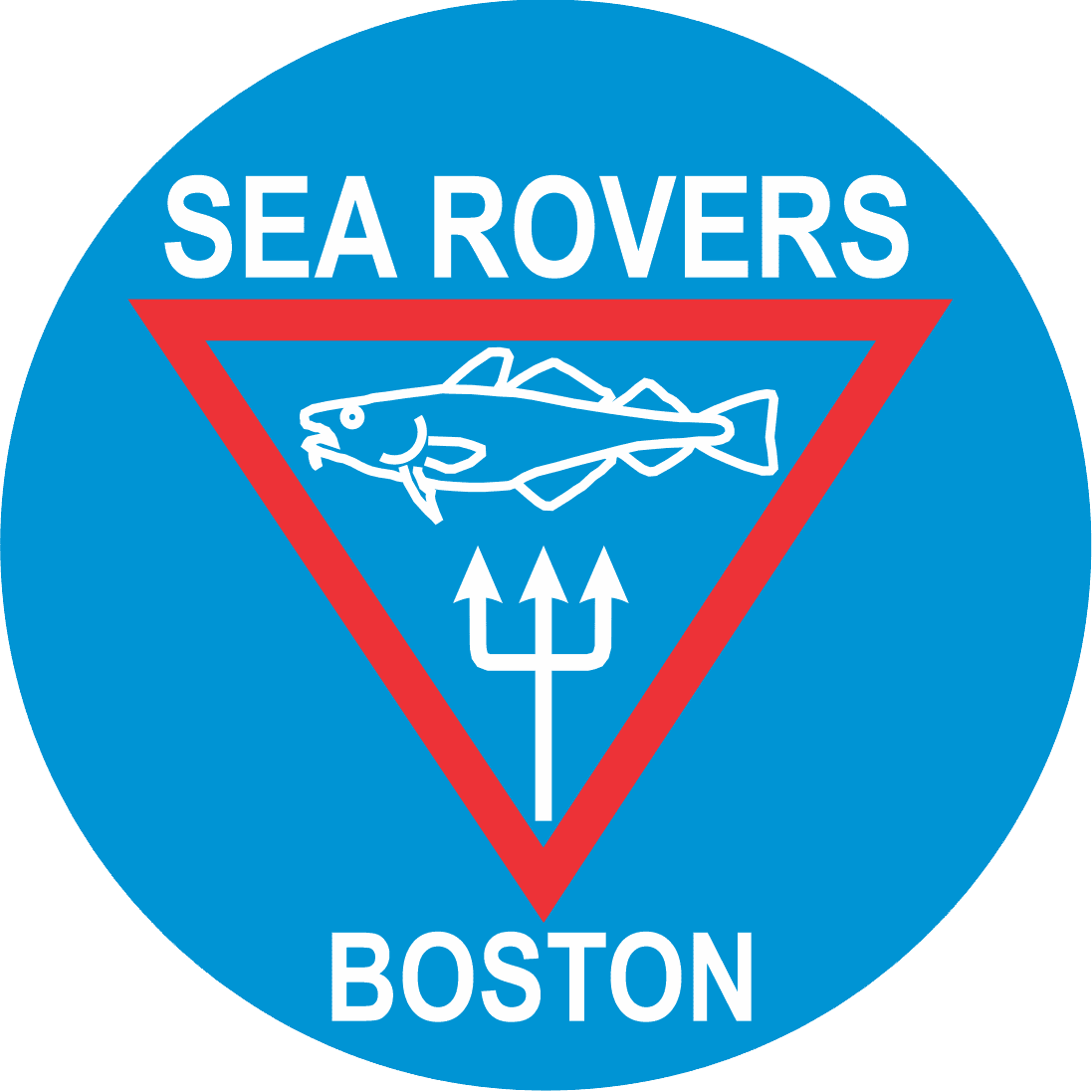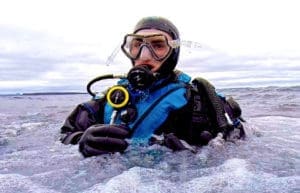Voluntourism – Helping to Conserve Marine Ecosystems
This presentation will cover the travel opportunities offered by the Oceanic Society, a marine conservation organization. Individuals participate in the conservation of marine ecosystems through ecovolunteer travel around the globe. Participants includes shark, sea turtle, dolphin, and coral reef programs. Dive trips include shark conservation in Palau and coral reef monitoring in Belize.
Discovering Madagascar
As part of a Conservation International expedition, photographer Keith Ellenbogen joined a team of marine scientists to explore the previously undocumented northeast coast of Madagascar to conduct a rapid assessment of the marine environment. Join Keith as he showcase images that highlight the artistic beauty of the marine habitat as well as the ecological pressures impacting the coral reefs.
The Great Penguin Rescue: Saving 40,000 Penguins From an Oil Spill
THE GREAT PENGUIN RESCUE is a vivid portrayal of the remarkable rescue mission that followed the Treasure oil spill in South Africa. The presenter is one of the penguin experts who trained and supervised 12,500 inexperienced but dedicated volunteers who rushed to Cape Town to help save the penguins.
Deep-sea exploration in the Mediterranean
Join Rhonda as she highlights her work as an ROV pilot for Dr. Robert Ballard in Turkey and Greece for the 2010 research expedition.
Beneath the White Sea: Ice Diving in Russia’s High Arctic
The pristine wilderness of Russia’s High Arctic presents unique and demanding challenges to SCUBA divers wishing to explore the frozen White Sea. In order to witness the silent beauty of the only inland sea to completely freeze in winter, divers must endure arduous travel logistics, harsh weather and bone-chilling cold. But beneath the ice lies a world of sublime beauty, filled with unearthly ice formations and unique wildlife. Journey with Eco-Photo Explorers as they dog sled across the fabled Lapland region of Finland and then venture out onto the ice in Russia for a unique and spellbinding experience.
Exploring Antarctica
Antarctica is a world of mystery and adventure. Explore new dive sites and learn about new dive technology with Faith as she shares photos and videos from her 2010 expedition. This expedition was the largest non-scientific diving expedition to Antarctica; Faith’s upcoming expedition in 2016 promises to be even more exciting.
A Soldier’s Story
They stand guard on the line, while we rest our heads on pillows at night, protecting our Nation. SGT Brian Fountaine, Tank Commander of the 1-66th Heavy Armor BN was deployed in 2003 as part of the initial invasion force into Iraq and again in 2005-2006. Intensive fire fights and constant presence patrols in the area around Taji, Brian’s up-armored Humvee he commanded detonated an improvised explosive device, right underneath his seat, resulting in the loss of his lower legs below the knee in 2006. After over a year of surgeries, infections, setbacks and intensive physical and occupational therapy sessions, Brian signed up for Wounded Warrior and Disabled Sports USA events which provide recreational sport activities to the soldiers and their families. For Brian that included white water rafting and camping in the Grand Canyon, skiing Vail, Colorado and SCUBA diving with his wife Mary. Come and learn about Brian’s journey and how sport activities such as SCUBA offered by nonprofit organizations and volunteers, has helped Brian and others remain active and enjoy life as they are and not dwell on the past.
Public Safety Diving Fatalities; Lessons Learned Since 1960
Since 1960, Public Safety Diving fatality statistics have allowed the PSD community to identify trends and implement safety measures. Consequently the number of PSD deaths has decreased in recent years but a new disturbing trend is emerging. Let’s learn from the past so we can work towards a safer future.
Diver Fatalities: How Good divers Get into Bad Trouble
An in-depth discussion of recreational diving fatalities using Dan’s analysis of nearly 1000 diving fatalities cases. This presentation also included a discussion of diving hazard identification and mitigation with recommendations on how to improve safety.
In Search of the U-550
Early on the morning of April 16, 1944 the German U-boat U-550 torpedoed one of the largest tankers in the world, the T-3 tanker SS Pan Pennsylvania. Less than three hours later the U-550 and 41 of her crew would be lying on the floor of the Atlantic Ocean. For sixty-six years the final resting place of the U-550 has eluded all those who have sought her. Join Mark Munro as he takes us on a journey through seven months of research and planning which culminates in a 2010 expedition eighty miles south of Nantucket Island In Search of the U-550.
The Jupiter Historic Shipwreck Expedition after Two Decades
After almost 2 decades, New Englander born & raised and accomplished undersea explorer, Captain Dominic Addario will return to make an updated presentation to the Boston Sea Rovers encompassing the past two and one half decades of being at the helm of the exploration of a mid 17th century historic shipwreck laden with treasure, just off the coast of Jupiter Florida. Capt Dom will also present his book, “A Guide to Responsible Undersea Exploration and field questions from the audience.
Wreck Diving the East Coast of Cape Cod…A Lifetime of Exploration of the Shipwrecks off Chatham, MA
The Cape’s elbow, Chatham, MA was feared by mariners. Dense fog, dangerous shoals, and more than 400 ships a day passing through a narrow corridor, account for the loss of almost 500 ships. Join Don as he showcases five wrecks, including the recently located, 5-masted schooner, Dorothy Palmer.
Save Our Leatherbacks Operation “SOLO”
The Leatherback Turtle extinction is the most severe environmental threat within the oceans because of the damaging ripple effect to all existing sea life. The location of S.O.L.O.’s conservation activities is in far East Indonesia on a very remote large Leatherback nesting beach. These Villagers must be the ultimate environmental stewards of the future of this magnificent turtle. We employ and train local aboriginal villagers because they are suited to tolerate the extreme conditions on and near the beach. If any program of conservation can succeed, the locals MUST “buy in” to the project and accept is as their own in any location.
Herring: A Keystone Species in the Northwest Atlantic
Atlantic herring is one of the most important fishes in New England, serving as an energy rich staple for many of the region’s ocean predators – including the fish we like to eat and the whales, dolphins and seabirds we like to watch. This presentation will provide an overview of the role herring play in the ecosystem, the history of the fishery and the problems associated with the growth of industrial-scale herring fishing in the region. You will learn about our coalition, the Herring Alliance, and what you can do to advance efforts to improve management of this fishery.
Alien Space Invaders Attack Massachusetts – An Update on Marine Invasive Species
Marine invasive species have established themselves in our coastal waters and many dominate the shallow benthic community. An overview of who these aliens are and how they got here will be presented along with results of an ongoing settlement plate monitoring program in Salem Harbor.
Red Sea for Christmas
The Red Sea is probably the most heavily dived area of the planet with winter being the off season. Join us as we dive the reefs and wrecks of this unique area and for a bit of land touring as well.
Fascinating camouflage tricks
The marine environment has the most complex and diverse camouflage on earth and divers enjoy this subject. I will present high-res photographs and HDTV footage of dynamic camouflage in a variety of cephalopods and fishes, and explain some new scientific findings about how camouflage works.
Astounding Camouflage: Photographs Showcasing Hard to Spot Marine Life
The images featured in most underwater presentations are selected for their appeal. Desirable images contain subjects that “pop” or immediately attract the viewer’s eye. This presentation showcases critters that are experts at camouflage. Photos presented will include subjects hidden in plain sight as well as photos whose subjects “pop”.
St. Vincent – macro wonderland
St Vincent has long since been known as a destination for macro photographers. It is blessed with many marine creatures that are rare in other parts of the Caribbean yet are common around this small island. Join Martinez to see why this is such a popular dive destination.
Freelance Your Dive Stories and Photos
So you would like share your trip of a life time or your weekend local dive adventure with the world and maybe make a little money too. Freelancing pro, Bob Sterner shares his tips on how to get your dive stories and photos into print in leading dive magazines, general interest consumer magazines and newspapers.
Wide Angle Underwater Photography
Explore the wide angle world of underwater photography with Berkley White. Macro critters are fascinating, but it’s the fisheye view that captures the full experience of the underwater environment. Berkley will share his latest portfolio of wide angle images of sharks, dolphins, lush reefs, and split images from around the world and will share his top 5 shooting tips to help underwater photographers capture their own visions with an eye for the wide.
An image is worth a thousand words
Join Michel Gilbert and Danielle Alary, expert underwater photographers and multimedia producers, as they share their best images and the stories behind them. They will give insights on the how-to’s and explain the story behind the image. This is an excursion into the minds and techniques of two talented image makers.
Swimming with Sharks – What Every Diver Should Know
Given the dramatic decline in the number of sharks, one would think that on a typical dive, a diver would likely not end up swimming with sharks. Well, that is not exactly the case. In fact, as a result of efforts to raise the awareness about the most misunderstood creature in the ocean, participation in eco=tour shark encounters are on the rise. In almost cases, divers leave these experiences with a new found respect for sharks and a curiosity to seek them out in the course of their normal dives. In this presentation, David Ulloa, aka “The Shark Whisperer” will give pointers and tips for safely swimming with sharks and what you should do when you find yourself face to face with one of nature’s perfect creatures.
Nudibranchs of New England
Nudibranchs are among New England’s most beautiful sea creatures. Luminous colors, wild shapes, and incredible variety – in other words, they pack an awful lot into an inch. Join Jerry Shine for a photographic look at more than 25 different species, with an emphasis on when, where and how to find them.
Lionfish, The Beautiful Outlaw
The Gulf of Mexico and Caribbean Sea are witnessing the emergence of the Indo-Pacific Lionfish as an invasive species. Marked for death nearly everywhere they are found there, this fatal beauty could upset the delicate ecological balance of reef systems in those waters. Fear and misinformation abound. In Lionfish, The Beautiful Outlaw, Documentary Filmmaker Paul Cater Deaton travels around the world in search of answers.
Filming Sharks
Join Joe Romeiro and Bill Fisher as they discuss underwater filming and filmmaking techniques and present excerpts from some of their latest shark expeditions.
Full Circle: The Bell Island Shipwrecks
The Bell Island shipwrecks have long been a popular dive site, due to their accessibility and state of their preservation. In 2010, the daughter of the U-Boat captain that sank two of the four ships visited Newfoundland, where she was greeted with friendship and understanding. She was able to share her father’s documents and mementos from that trip which has bolstered a ten year, hard-fought campaign to declare the wrecks a historic site.
Hunters and Hunted Off Our Shores
It is January 1942, and Germany has sent its U-boat fleet to the rich untapped hunting grounds off the eastern coast of the United States. New Jersey stood as the southern gateway to New York Harbor. The waters off of New Jersey’s coast would serve as the stage for nearly three years of sinkings and death, tragedy and heroism. In the first 6 months alone of the U-boat war against the U.S., 397 ships and roughly 5000 lives were lost! Come and see what it was like to dive on both the Hunters and the Hunted of that conflict in the early days of east coast wreck diving in the 1960’s and 70’s.
The Fate of the Carl D. Bradley
The Carl D. Bradley was the largest self unloading ship on the Great Lakes in 1958. A November storm tore the great ship in two, with the loss of all but two crew, The Bradley now rests in 375 feet below the surface of Lake Michigan. Hear the tragic story and see video in this not to miss presentation.
PRINCESS SOPHIA
The PRINCESS SOPHIA was Alaska’s greatest Marine tragedy. Join Bart as he examines the cause, the rescue, and the sinking of the PRINCESS SOPHIA along with the artifacts recovered and preserved.
The Sharkman
The story of Jim Abernathy and his extraordinary rapport with sharks. An expedition to the little Bahamas Banks with Jim’s particular friend, “Emma”, a 14 foot tiger shark.
Lions & Tigers & Humpbacks, Oh My!
Recently uncovered secret documents from Soviet Russia reveal the killing of tens of thousands of whales during the era. Nancy travels to Fiji and Tonga to investigate the impact of cold-war whaling on present day Humpback whale populations. While searching for evidence of whale population growth, Nancy encounters Marama, and her newborn daughter, Lai Lai. In a rare, treasured moment, Marama allows an up close and personal bond with the three-day old Humpback, Lai Lai.
White Sharks in Our Backyard
White sharks are coming back to New England’s coastal waters, drawn in by the growing gray seal population. This presentation highlights the first time efforts of marine scientists to study the ecology of white sharks in the North Atlantic and debuts new footage of this species captured in 2010.
A 2010 Expedition to Examine the Natural History of the Bahamas to 120 Meters
This 2010 expedition set out to explore the deep fore-reef in TOTO (Tongue Of The Ocean) from 50 to +/- 120 m, noting anomalous/dramatic geological formations associated with historic sea-level changes, and unique biological/ecological diversity of the deep reef ecosystem. The west margin of TOTO (east coast of Andros) is the 3rd largest barrier reef system in the world, and still remains largely unexplored. This presentation will highlight all aspects of this expedition, from its historical context, to on-site operations, to its discoveries.
The Mooring Project in Stellwagen Bank National Marine Sanctuary
Stellwagen Bank National Marine Sanctuary sits at the mouth of Massachusetts Bay and is home to diverse and abundant marine life and shipwrecks with stories to tell. This fascinating area is largely unexplored by divers even though it is no more than 25 miles from Boston. As a result of increased collaborative outreach efforts from the sanctuary and representatives of the diving community, divers are beginning to learn of the sanctuary’s diving opportunities. In particular, divers are interested in visiting sanctuary shipwrecks; however, the challenging offshore ocean environment and shipwreck protection regulations require a new approach to accessing these sites. This presentation will describe a mooring test project deployed on a recently discovered and still unidentified trawler shipwreck in 100 feet of water. The novel mooring system adapted existing techniques to create a simple and durable mooring that can be effectively used in the sanctuary’s environment. In addition to the mooring project’s specifics, the presenters will also describe how to best use the mooring and other sanctuary diving opportunities.
Ice Diving the World’s Largest Ice House
A multiyear underwater archaeological excavation, under state permit, of what was the world’s largest ice house under one roof is chronicled. Underwater photographs of the only remaining structure and dozens of artifacts dating as early as 1840 are presented along with the dubious demise of the ice company by fire.
Photographing Wrecks
From the wrecks of Truk Lagoon to the Bianca C in Grenada, Ethan Gordon will discuss different techniques for photographing wrecks and artifacts using today’s digital cameras. Also discussed will be additional equipment such as high powered LED lights, remote lighting, rebreathers, communications and more.















